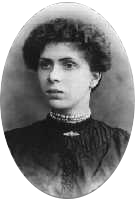The Bruzzi-Malatesta Brigades in the Resistance in Lombardy: Libertarian Organisation in Practice
The thesis referred to here aims to reconstruct the contribution made to the Lombard resistance by the anarchist Bruzzi-Malatesta Brigades in the period 1943-1945.
The decision to concentrate my study upon a period of Italian contemporary history that has been well examined arises from the need to throw some light on seemingly marginal aspects of the resistance. I say marginal because, alongside the studies and memoirs churned out on the topic, it is only in recent years that that investigation has begun to explore the plurality of political and life experiences that, besides feats of arms per se, were what resisting was all about: a painful route to individual and collective cultural emancipation.
Inside this multi-voiced resistance, the anarchist movement - taken as a community of militants and as a political entity - deserves a chapter to itself. If we take fascism as the encapsulation of notions such as fatherland (nationalist, aggressive and militaristic), State (authoritarian and bureaucratic) and major players (single party, capital, Church and monarchy), it is readily apparent that fascism is the distillation of everything to which anarchism is most opposed.
From a psychological viewpoint, this radical incompatibility between fascism and anarchism helped anarchists considerably when it came to the coup d’etat of 25 July 1943 and the ensuing disintegration after 8 September 1943; anarchist militants regarded these events not as times of trauma or punctured illusions but rather as episodes in the endless struggle against State and capital.
In this light, the story of the Bruzzi-Malatesta Brigades is interesting, they being - along with the units in Carrara, Pistoia and Genoa - the most substantial (in terms of quality and numbers) contribution made by Italian anarchists to the partisan struggle. On the other hand, the anarchist movement in Lombardy never succeeded in setting up units that were, in ideological terms, homogeneous and in this resides the chief interest of my research. Lurking behind an seeming organisational and political monolithism traceable to the situation attendant upon the underground struggle, there persisted in fact all of the historical brands of the Italian anarchist movement, with its tensions between individualists, anarcho-communists, collectivists, libertarian socialists and anarcho-syndicalists, as well as (in terms of tactics) between gradualists, diehards and insurrectionists; equally lively was the tension in structural terms between the organisationists and anti-organisationists. This incorrigible pluralism represents the weakness as well as the entire splendour of classical anarchism. And this whole ideological baggage and history of strife came to grips with an extraordinary historical situation such as those twenty awful months in Italy constituted.
The Bruzzi-Malatesta Brigades therefore offer a model for understanding the history of the Italian anarchist movement: the history of a political movement wrestling with survival and attempts to relaunch itself on the basis of an updated edition of libertarian aims, but, above all, the story of militants forced to make radical choices in the midst of the wreckage of the times; there were militants of long standing, since many of the leading figures in the Milanese Brigades who had subscribed to the individualist line in pre-fascist Italy rallied around Carlo Molaschi and became libertarian communists during the resistance. (Molaschi himself went on to become socialist mayor of a town near Milan after the war), but they also included younger fighters only born during the fascist era, who passed through the anarchist ranks during the resistance only to come to rest in different political sectors (so much so that very little of this anarchist upsurge was to survive beyond the 1940s).
I believe that I have identified one of the reasons for their hasty departure in the attempts (some of these flying in the face of anarchism’s essential postulates) at re-launch that the Milanese militants brought to the Italian movement and which were comprehensively defeated at the congress in Carrara in 1945, which, whilst it papered over dangerous institutional implications, defused the great potential that the Lombard experience might have brought to the new republic.
True, Milan 1945 was not Barcelona 1936, yet the libertarian influence carried a quite respectable weight; if we think that in September 1945 the Milanese FCL (Federazione Comunista Libertaria - Libertarian Communist Federation) could call upon three hundred partisans, twelve civilian sections with thousands more card-carrying members, two worker groups from the Alfa Romeo and Richard Ginori plants, a weekly newspaper, Il Comunista Libertario (later renamed Il Libertario) and a resounding success in the first provincial elections of the FIOM (metalworkers’ federation) in which it succeeded in securing one of ten seats on the leadership committee.
From: Bollettino Archivio G. Pinelli, 16, 12/2000, pp. 16-17.. Translated by: Paul Sharkey.
Subjects:
Similar items
- de Agostini, Mauro. Milan's Anarchists in the Fight for Liberation.
- Alfonso Failla (1906-1986) Italian anarchist.
- Pezzica, Lorenzo. Augusta Farvo, Partisan and Kiosk Operative.
- Granata, Mattia. Francesco Ghezzi biography from the Biblioteca Franco Serantini.
- Ortalli, Massimo. Francesco Ghezzi, from antifascism to Stalin's gulags.
